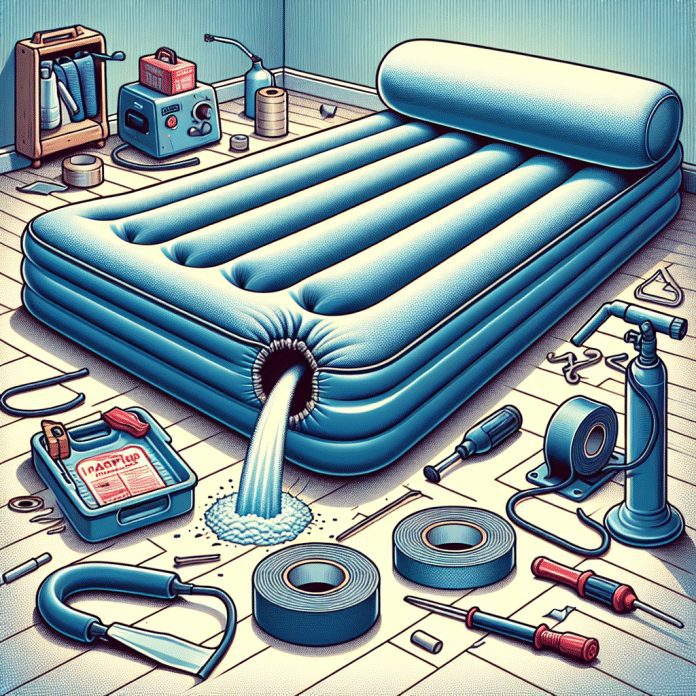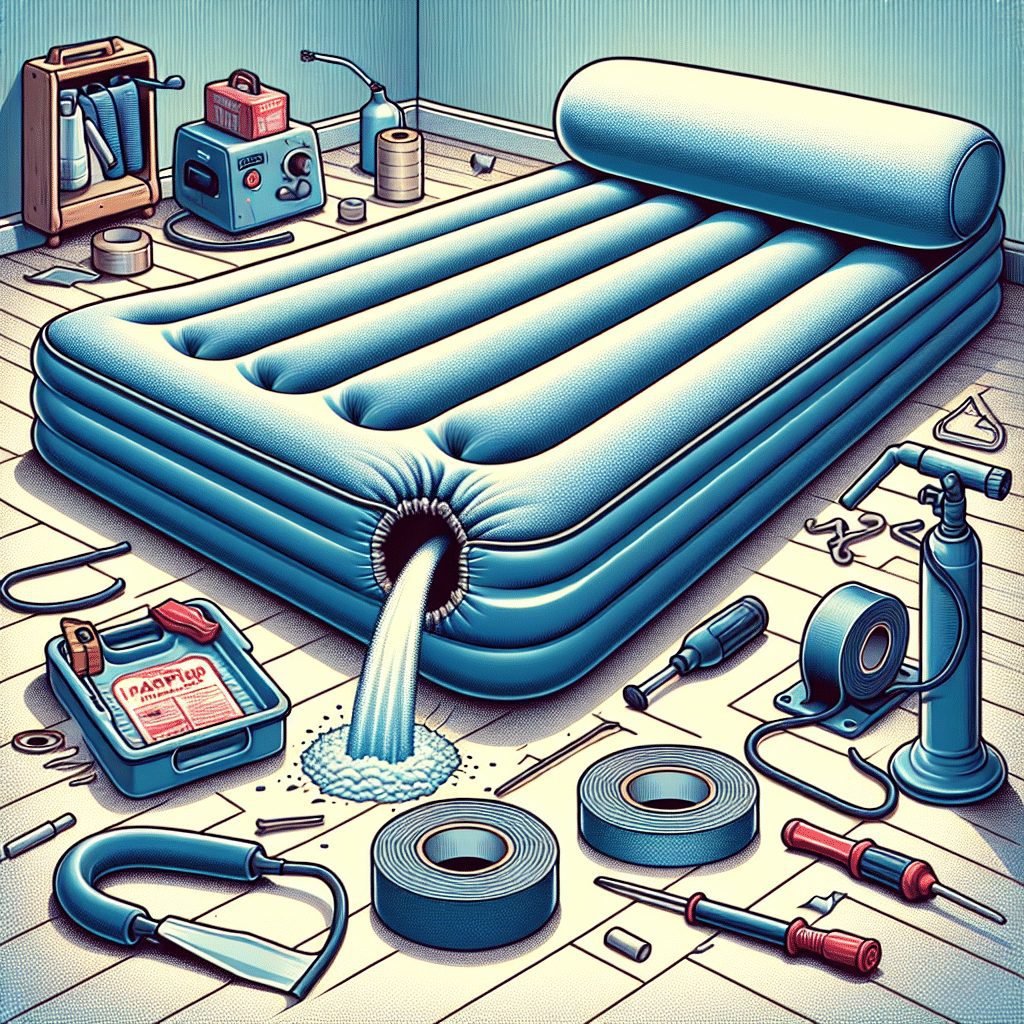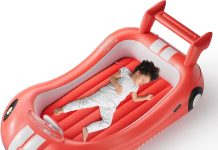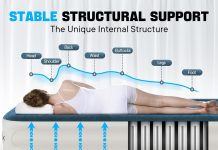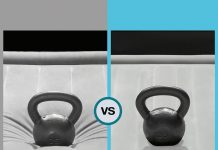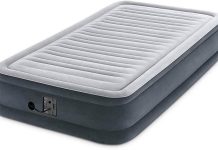We often turn to air mattresses for their convenience and portability, but what happens when they fail to live up to our expectations? In this article, we explore the common problems encountered with air mattresses. From leaks and deflation issues to discomfort and noisy squeaks, we uncover the common pitfalls that can disrupt a good night’s sleep and provide you with practical solutions to overcome these challenges. So, whether you’re a frequent camper or a host setting up a guest room, join us as we address the common air mattress problems that may be keeping you up at night.
Review contents
Deflation
Leakage
Air mattresses are a convenient and portable sleeping solution, but one common issue that users may encounter is deflation. Nothing is more frustrating than waking up in the middle of the night on a deflated mattress. The most common cause of deflation is leakage. Over time, small holes can develop in the material, allowing air to escape. These holes can be caused by sharp objects, pet claws, or even repeated use.
To fix this problem, it is essential to identify the source of the leakage. One way to do this is by inflating the mattress and listening for the sound of air escaping. Once the hole has been located, it can be patched using a repair kit specifically designed for air mattresses. These kits usually include adhesive patches that can be applied to the hole, creating an airtight seal. It is crucial to follow the instructions carefully to ensure a successful repair.
Valve Issues
Another common cause of deflation in air mattresses is valve issues. The valve is responsible for controlling the airflow in and out of the mattress. If the valve is not properly sealed or has become damaged, it can result in air leakage and deflation.
If you suspect that the valve is the source of the problem, check to make sure it is tightly sealed. Some air mattresses have a manual valve that may require a bit of force to ensure a tight seal. If the valve is damaged or cracked, it may need to be replaced. Contacting the manufacturer or referring to the mattress’s user manual will provide guidance on how to obtain a replacement valve.
Uneven Inflation
Aging Material
As air mattresses age, the material used to construct them may start to wear down, leading to uneven inflation. Over time, the constant pressure and movement from use can cause the material to become thin and prone to stretching. This can result in certain areas of the mattress inflating more than others, causing discomfort and an uneven sleeping surface.
To prevent this problem, it is important to properly maintain and care for your air mattress. Avoid placing it on rough or sharp surfaces that could cause damage to the material. Additionally, following weight restrictions and not overinflating the mattress can help prolong its lifespan and prevent uneven inflation.
Faulty Pump
Another factor that can contribute to uneven inflation is a faulty pump. The pump is responsible for inflating the mattress, and if it is not functioning properly, it may not distribute air evenly throughout the mattress. This can result in certain areas being over-inflated while others remain under-inflated.
If you notice uneven inflation despite using a working pump, try adjusting the position of the mattress while inflating it. This can help distribute the air more evenly. If the problem persists, consider contacting the manufacturer for assistance or investing in a new pump if necessary.
Noisy
Rubbing Sounds
One complaint that air mattress users often have is the presence of annoying rubbing sounds when they move on the mattress. These sounds can disrupt sleep and make the sleeping experience less comfortable. The rubbing sounds are usually caused by the friction between the air mattress and the surface it is placed on.
To minimize rubbing sounds, try placing a non-slip mat or a thin blanket underneath the mattress. This can provide a barrier between the mattress and the surface, reducing friction and noise. Additionally, consider avoiding movements that generate excessive friction, such as quickly shifting positions or getting in and out of bed abruptly.
Squeaking Valves
In some cases, the source of the noise may not be the rubbing of the mattress but rather squeaking valves. The valves, responsible for controlling airflow, can sometimes become misaligned or worn out, resulting in squeaking sounds when air is being released or pumped into the mattress.
To address squeaking valve noises, try applying a small amount of lubricant specifically designed for valves. This can help reduce friction and eliminate the squeaking sounds. If the problem persists, contacting the manufacturer for further assistance may be necessary.
Odor
Off-Gassing
Air mattresses are often made of synthetic materials that can emit a distinct odor known as off-gassing. New air mattresses, in particular, may have a strong chemical smell that can be unpleasant or even overpowering. Off-gassing occurs when the volatile organic compounds (VOCs) used in the manufacturing process are released into the air.
To minimize off-gassing, it is recommended to air out the mattress before using it. Remove the mattress from its packaging and allow it to sit in a well-ventilated area for a few hours or even a few days. This will help dissipate the odor and reduce the intensity of off-gassing. Using a mattress cover or protector can also help minimize direct contact with the mattress material.
Mold or Mildew
Another potential source of odor in air mattresses is mold or mildew. If the mattress is exposed to moisture or stored in a damp environment, it can create the perfect conditions for mold and mildew growth. These fungi can produce a musty smell that can be unpleasant and potentially harmful.
To prevent mold or mildew growth, it is crucial to keep the air mattress clean and dry. Avoid using the mattress in humid environments, and if it does get wet, make sure to thoroughly dry it before storing or using it again. Regularly cleaning the mattress with mild soap and water, followed by thorough drying, can also help prevent the growth of mold or mildew.
Firmness
Insufficient Support
One common complaint about air mattresses is the lack of sufficient support, resulting in discomfort and poor sleep quality. The level of firmness in an air mattress is determined by the amount of air it contains. If the mattress is not adequately inflated, it can lead to sagging and a lack of support, particularly in the middle or heavier areas of the mattress.
To ensure sufficient support, carefully follow the inflation instructions provided by the manufacturer. It is important not to overinflate the mattress, as this can result in excessive firmness and discomfort. Finding the right balance between adequate inflation and personal preference is key to achieving the desired level of support.
Over-inflation
On the other end of the spectrum, over-inflation can also be a problem. If the mattress is inflated too much, it can become excessively firm and uncomfortable. Over-inflation can not only affect the comfort but also increase the risk of leaks or valve damage.
To avoid over-inflation, use a pump with a pressure gauge or follow the recommended inflation guidelines provided by the manufacturer. It may take some trial and error to find the ideal level of inflation, but it is important to strike a balance between firmness and comfort.
Durability
Material Quality
The durability of an air mattress is largely dependent on the quality of the materials it is made of. Cheaper air mattresses may be constructed with lower-quality materials that are more prone to punctures, stretching, or wear and tear. Higher-quality air mattresses, on the other hand, are typically constructed with more durable materials.
When purchasing an air mattress, it is worth considering investing in a higher-quality option that uses strong and puncture-resistant materials. This can help ensure that the mattress will withstand regular use and last longer. Reading reviews and researching the materials used in the construction of the mattress can provide valuable insights into its durability.
Seam Strength
In addition to material quality, the strength of the seams in an air mattress is crucial for its durability. The seams are where different layers of material are joined together, and if they are not strong and well-constructed, they can be prone to splitting or unraveling, leading to air leakage and deflation.
When examining an air mattress, pay attention to the quality of the seams. Look for mattresses with reinforced seams or those that use advanced construction methods, such as welded or bonded seams. These seam types are typically more durable and less likely to fail over time.
Comfort
Lack of Pressure Relief
Comfort is a significant factor when it comes to choosing an air mattress. One common problem users encounter is a lack of pressure relief. The firmness of an air mattress can directly impact the level of comfort it provides. If the mattress is too firm, it can create pressure points that can lead to discomfort, particularly for those with joint or back issues.
To enhance pressure relief, consider using a mattress topper or a foam pad on top of the air mattress. These additional layers can provide cushioning and contouring, relieving pressure and improving overall comfort. Experimenting with different levels of inflation can also help achieve the desired level of firmness and comfort.
Temperature Regulation
Another aspect of comfort is temperature regulation. Some air mattresses have a tendency to retain heat, which can make sleep uncomfortable, especially during hotter months or for individuals who naturally sleep hot.
To address temperature regulation issues, look for air mattresses that are specifically designed to promote airflow and heat dissipation. These mattresses often feature special ventilation systems or cooling gel-infused layers. Alternatively, using breathable bedding materials and keeping the room temperature cool can also help improve sleep comfort on an air mattress.
Size
Fit Issues
Air mattresses come in a variety of sizes, ranging from twin to king, but fit issues can still be a problem. The size of the air mattress might not perfectly match the dimensions of the bed frame or sleeping area, resulting in an uncomfortable fit.
To avoid fit issues, carefully measure the dimensions of the bed frame or the available space where the mattress will be used. Compare these measurements to the dimensions provided by the manufacturer before making a purchase. Additionally, consider using a mattress pad or non-slip mat to prevent the mattress from moving or sliding during use, further ensuring a more comfortable sleeping experience.
Limited Options
Despite the range of sizes available, air mattresses may not offer as extensive a selection as traditional mattresses. This limited availability can be problematic for those who have specific size requirements or preferences.
To overcome this challenge, it may be necessary to explore different brands or consider custom-made air mattresses. Some manufacturers offer customization options, allowing customers to choose specific dimensions or design features. Exploring online specialty retailers or contacting air mattress manufacturers directly can provide additional options and solutions.
Maintenance
Cleaning Difficulties
Maintenance is an essential aspect of owning an air mattress, as proper care can prolong its lifespan. However, cleaning an air mattress can sometimes be challenging, especially for larger models or those with built-in pumps.
To make cleaning easier, consider using a mattress cover or protector. These can be easily removed and machine-washed, protecting the mattress from spills, stains, and dirt. Additionally, following the manufacturer’s cleaning instructions and spot-cleaning any stains as soon as they occur can help maintain the cleanliness and hygiene of the air mattress.
Pump Maintenance
If your air mattress comes with a built-in pump, it is important to also consider its maintenance. Pump malfunction or damage can significantly impact the performance and lifespan of the mattress.
Regularly inspect the pump for any signs of wear or damage, such as frayed cords or loose connections. Keep the pump clean and free from debris, as this can affect its functionality. Additionally, following the manufacturer’s recommended maintenance guidelines, such as regularly lubricating the pump or replacing specific components, can help ensure its longevity and proper operation.
Price
High-Quality Air Mattresses
When it comes to purchasing an air mattress, price can vary greatly depending on the quality, features, and brand. Higher-quality air mattresses tend to come with a higher price tag, but the investment can be worthwhile considering their durability and comfort.
When evaluating the price, consider factors such as material quality, construction, and warranty. Researching customer reviews and comparing different options can help determine the best value for money. It is important to strike a balance between affordability and quality, ensuring the selected air mattress meets your specific needs and preferences.
Affordability
On the other hand, affordability is also an important consideration, especially for those on a tight budget. Air mattresses can be a cost-effective alternative to traditional mattresses, making them an attractive option for temporary sleeping arrangements or occasional use.
To find affordable options, consider shopping during sales or looking for discounts from reputable retailers. Comparing prices from different sellers and considering lesser-known brands can also yield more budget-friendly options. However, it is crucial to balance affordability with other factors such as durability and comfort to ensure a satisfactory sleeping experience.
In conclusion, while air mattresses offer convenience and portability, they can also come with their fair share of problems. Deflation, uneven inflation, noise, odor, firmness, durability, comfort, size, maintenance, and price are common issues that users encounter. By understanding the causes and potential solutions to these problems, individuals can better navigate the challenges associated with air mattresses and ensure a comfortable and restful sleep experience.

